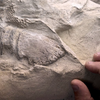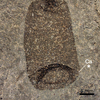Viking for a Day: Researchers Recreate Viking Voyages!

Researcher Greer Jarrett Rows a Clinker Boat!
Post Author- Ellis Nolan
For one student at Lund University in Sweden, reading studies and collecting archaeological evidence wasn’t enough to grasp the full picture of an awe-inspiring people of the Nordic region: the Vikings. In a new study, a team of researchers set out to learn more about these nomads of legend by setting off on their own voyage of the seas, complete with historically accurate ships!
According to the authors, contemporary archaeological research on the Vikings has mostly been limited to examination of artifacts and landmarks on, well, land. This is despite the fact that sea travel was an important aspect of old Nordic society, particularly in terms of trade. By retracing the wakes of Viking ships of old, the authors argued they could make more accurate judgements about Viking seafaring habits, such as the lengths of their journeys and outposts they used for shelter along the way.
First, the authors acquired 7 different vessels, known as “clinkers” for their shingle-like hull construction. These boats are built in a historical tradition called Åfjordsbåt, which dates back to the Viking ages. Lighter weight than modern vessels and with smaller masts, these ships could be hauled onshore and stowed behind lower shelters. These characteristics on sea and land gave the researchers insights into the types of places Vikings could have travelled. These voyages were at times quite difficult, the limited efficacy of rowing these craft set them mostly at the mercy of the wind.
A “Clinker” Boat
Upon completing their journeys, the researchers concluded that many of the outposts (known as “havens” in the study) were frequented by Viking sailors and formed an important part of Viking sea travel. This conclusion was supported further by the researchers’ reconstruction of historical sea levels, which would have slightly changed the geography of the area.
This type of study, known as “experimental archaeology” is an emerging technique that researchers hope will lend insight into subjects where little material evidence is available. These experiments run the gamut of forging medieval weaponry, knapping neolithic stone tools, as well as Galileo’s inclined plane experiment. That being said, the authors stress that experiments such as these can only offer suggestions as opposed to concrete conclusions, although they are hopeful the future will see more journeys such as theirs. Perhaps the best question for researchers to ask is this: “What would a Viking do?”
Interested in Vikings? Check out our Viking Age Collection here!
Featured Product
Joe Frazier Boxing Glove
Cool Things!

Is “Paul is Dead” Dead?: Unpacking One Of Pop Culture’s Most Enduring Conspiracy Theories

Scientists Discover Hooves and Skin in Preserved Dinosaur "Mummies!"
A dinosaur discovery just in time for Halloween! In a new analysis of a group of fossils from Wyoming, Scientists have determined this group of fossils are dinosaur “mummies,” with preserved skin and even hooves.

Scientists Record a Bat Catching Birds Mid-Flight!
Bats, birds, screeches, oh my! In a reverse-Hitchcock twist, a new study reveals that a species of European bat catches and eats birds mid-flight.
Specimen Deep Dives

The House that Ruth Built: The Story of the Old Yankee Stadium

The Queen of the Skies: the Story of the Boeing 747

Old Ironsides: The USS Constitution and the Start of the U.S. Navy
Long Form Articles

The Artist Behind the Macintosh: Susan Kare and Apple Computers
While the two Steves, Jobs and Wozniak, are the most well known faces behind Apple computers, equally important to the products and culture of the company were those who crafted the experience of using their computers through design. The most notable of these visual architects was Susan Kare, a designer responsible for “humanizing” Macintosh computers.

Can I Lick It? Yes You Can!
Have you ever been unable to tell if a fossil was really a fossil, but you were too embarrassed to admit it? Have you ever wanted to lick a fossil just because, but you didn’t want to risk judgment from your peers? Well, good news! You can kill two birds with one stone! Licking a fossil can actually help you determine if it’s the real deal or just another rock.

Is It Legal To Own a Meteorite: How to Start Your Outer Space Collection!
Meteorites are some of the rarest geological specimens to be found on Earth. Of course, since these stones are not of our world, purchasing them can sometimes be a confusing process. Is it legal to own a meteorite? In short, yes! Read on for help starting your cosmic collection!


















